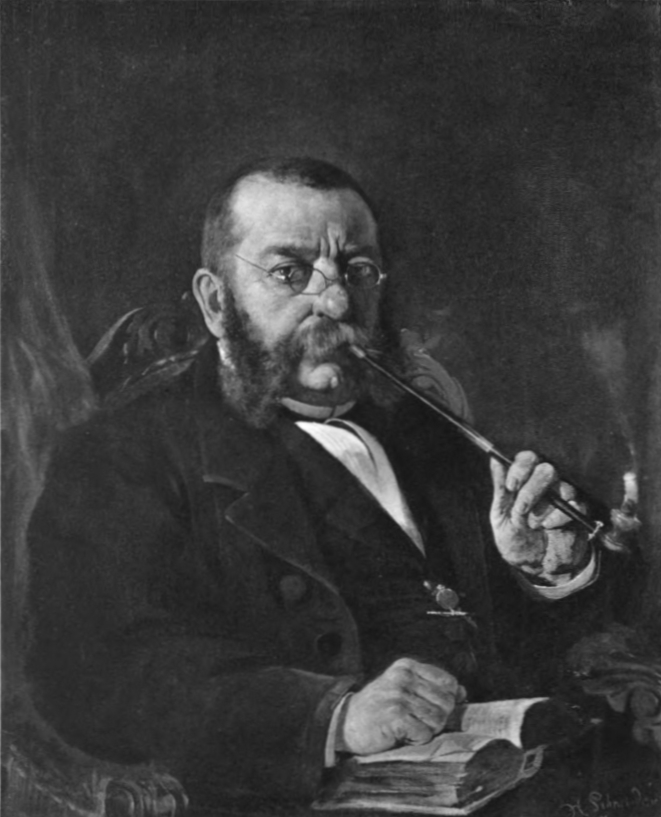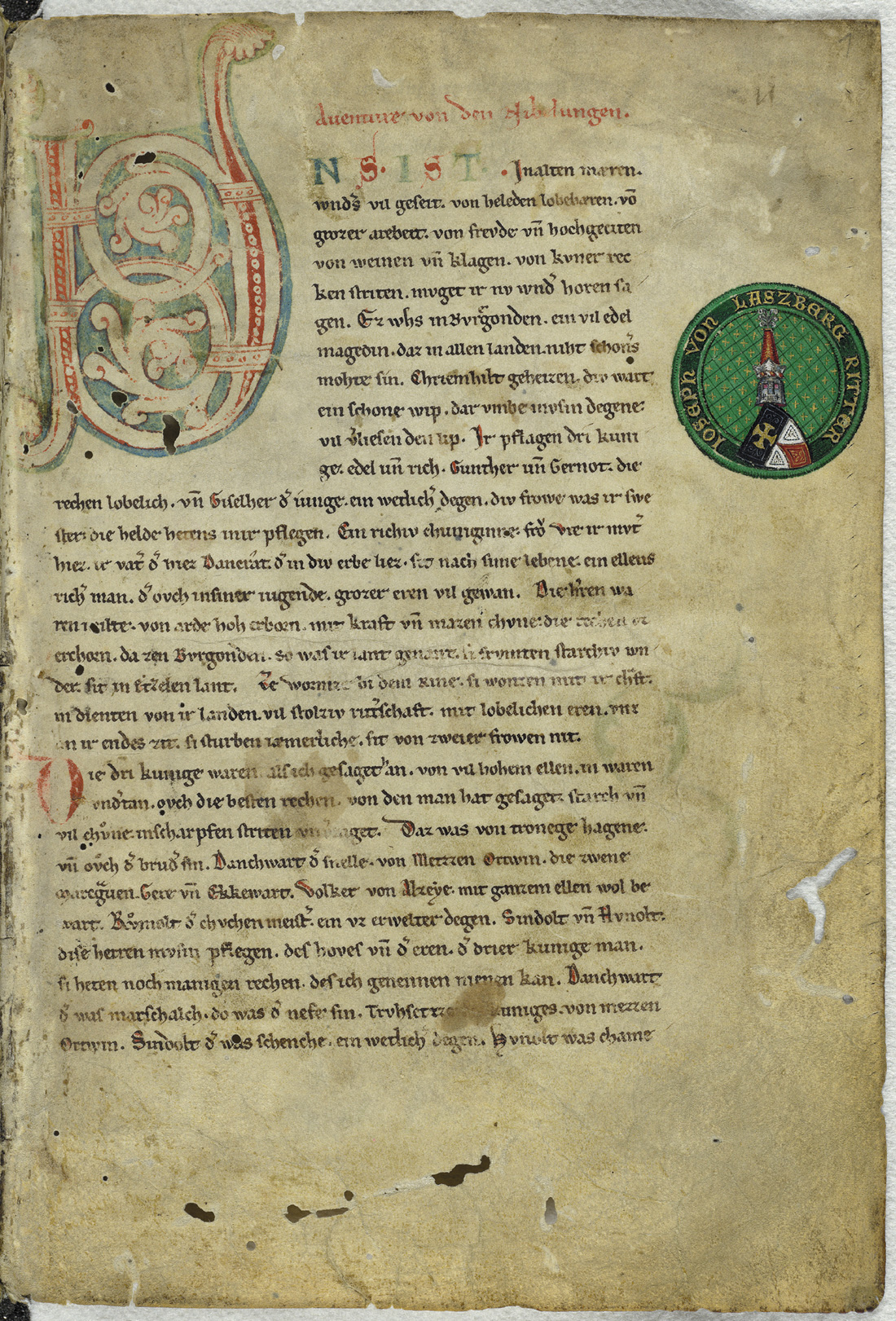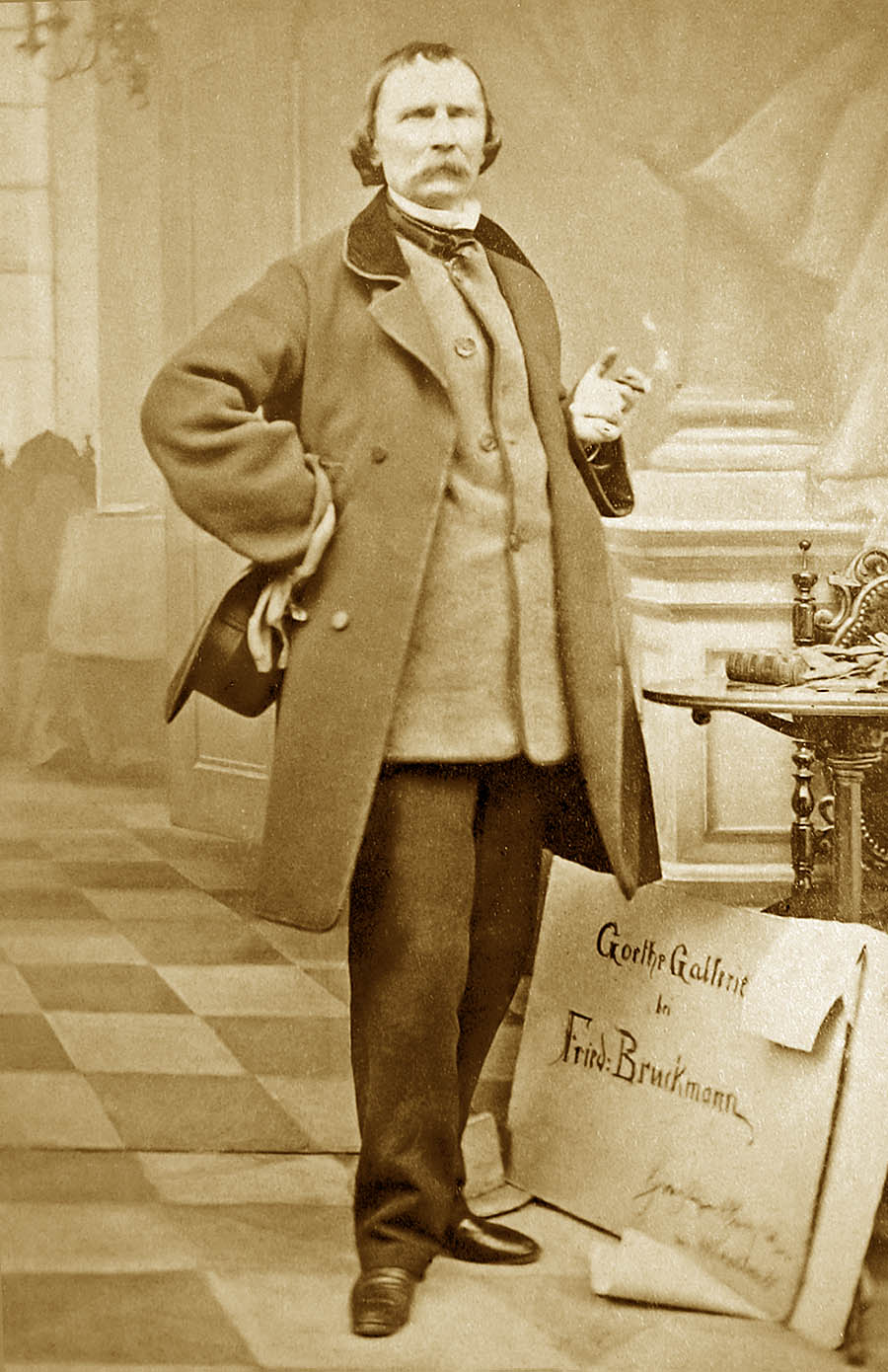|
Kaspar Braun
Kaspar Braun (13 August 1807 – 29 October 1877) was a German wood engraver. Biography He was born at Aschaffenburg, first studied painting in the Munich Academy, and then turned his attention to wood engraving, in which he received instruction from Brevières in Paris and Dessauer in Munich, and in this branch of art he made his career. In conjunction with Dessauer, he established a graphic art institute in Munich in 1839. He became associated with Friedrich Schneider in 1843, and established the humorous publication ''Fliegende Blätter''. Works Among the numerous works to which he contributed engravings are the following: * ''Das Nibelungenlied'', after the drawings of Schnorr and Neureuther * ''Volkskalender'', with illustrations after Kaulbach Kaulbach or von Kaulbach is a German surname. Notable people with the surname include: * Bruno Franz Kaulbach (1880–1963), Austrian Lawyer *Charles Edwin Kaulbach (1834–1907), a Canadian merchant, ship owner and politica ... [...More Info...] [...Related Items...] OR: [Wikipedia] [Google] [Baidu] |
Wood Engraving
Wood engraving is a printmaking technique, in which an artist works an image or ''matrix'' of images into a block of wood. Functionally a variety of woodcut, it uses relief printing, where the artist applies ink to the face of the block and prints using relatively low pressure. By contrast, ordinary engraving, like etching, uses a metal plate for the matrix, and is printed by the intaglio method, where the ink fills the ''valleys'', the removed areas. As a result, wood engravings deteriorate less quickly than copper-plate engravings, and have a distinctive white-on-black character. Thomas Bewick developed the wood engraving technique in Great Britain at the end of the 18th century. His work differed from earlier woodcuts in two key ways. First, rather than using woodcarving tools such as knives, Bewick used an engraver's burin (graver). With this, he could create thin delicate lines, often creating large dark areas in the composition. Second, wood engraving traditionally use ... [...More Info...] [...Related Items...] OR: [Wikipedia] [Google] [Baidu] |
Aschaffenburg
Aschaffenburg (; South Franconian: ''Aschebersch'') is a town in northwest Bavaria, Germany. The town of Aschaffenburg is not part of the district of Aschaffenburg, but is its administrative seat. Aschaffenburg belonged to the Archbishopric of Mainz for more than 800 years. The town is located at the westernmost border of Lower Franconia and separated from the central and eastern part of the ''Regierungsbezirk'' (administrative region) by the Spessart hills, whereas it opens towards the Rhine-Main plain in the west and north-west. Therefore, the inhabitants speak neither Bavarian nor East Franconian but rather a local version of Rhine Franconian. Geography Location The town is located on both sides of the Main in north-west Bavaria, bordering to Hesse. On a federal scale it is part of central Germany, just southeast of Frankfurt am Main. In the western part of the municipality, the smaller Aschaff flows into the Main. The region is also known as ''Bayerischer Untermain ... [...More Info...] [...Related Items...] OR: [Wikipedia] [Google] [Baidu] |
Academy Of Fine Arts Munich
The Academy of Fine Arts, Munich (german: Akademie der Bildenden Künste München, also known as Munich Academy) is one of the oldest and most significant art academies in Germany. It is located in the Maxvorstadt district of Munich, in Bavaria, Germany. History The history of the academy goes back to the 18th century, before the 1770 founding by Elector Maximilian III. Joseph, the so-called "drawing school", which already bore the name "academy" in its name ("Zeichnungs Schule respective Maler und Bildhauer academie"). The Academy of Fine Arts was enhanced in 1808 by King Maximilian I Joseph of Bavaria as Royal Academy of Fine Arts. The Munich School refers to a group of painters who worked in Munich or were trained at the Academy between 1850 and 1918. The paintings are characterized by a naturalistic style and dark chiaroscuro. Typical painting subjects included landscape, portraits, genre, still-life, and history. From 1900 to 1918 the academy's director was Ferdinand Fr ... [...More Info...] [...Related Items...] OR: [Wikipedia] [Google] [Baidu] |
Louis-Henri Brévière
Louis-Henri Brévière (15 December 1797, in Forges-les-Eaux – 2 June 1869, in Hyères) was a French engraver. He became known for reviving wood-engraving using a burin; which had fallen into neglect since the seventeenth century. Biography He studied at the École de Dessin in Rouen, directed by , the founder's son. From 1820 to 1830, he had a shop in Rouen. In 1823, he perfected a process for engraving the scrolls that were used for printing indiennes; a type of textile. During this time, he became a member of the , the Académie des sciences, belles-lettres et arts de Rouen, and the .''Journal de Rouen'', 13 June 1869, pg.1 In 1834, he received a gold medal at the municipal exposition of fine arts and, in 1839, a large silver medal at the Salon in Paris. Shortly after. he was appointed Director of Engraving at the Imprimerie Nationale. He purchased the Imprimerie Monton, in Les Andelys, in 1855. He retired to Rouen in 1863, where he wrote his memoirs, and died in Hyèr ... [...More Info...] [...Related Items...] OR: [Wikipedia] [Google] [Baidu] |
Fliegende Blätter
The ' ("Flying Leaves"; also translated as "Flying Pages" or "Loose Sheets") was a German weekly humor and satire magazine appearing between 1845 and 1944 in Munich. Many of the illustrations were by well-known artists such as Wilhelm Busch, Count Franz Pocci, Hermann Vogel, Carl Spitzweg, Julius Klinger, Edmund Harburger, Adolf Oberländer and others. It was published by , a company belonging to the wood engraver Kaspar Braun and illustrator Friedrich Schneider. Aimed at the German bourgeoisie, it reached a maximum circulation of c.95,000 copies by 1895. It merged in 1928 with a competitor, the '' Meggendorfer-Blätter'' and was published until 1944 as ' by the in Esslingen am Neckar. Sample illustrations File:Kaninchen und Ente.png, The first known instance of the rabbit–duck illusion, anonymous illustration from the 23 October 1892 issue File:Mahler conducting caricature.jpg, ''Mahler conducting'' by , 1901 File:Fliegende Blätter 1903 00250447.jpg, Illustration by , ... [...More Info...] [...Related Items...] OR: [Wikipedia] [Google] [Baidu] |
Nibelungenlied
The ( gmh, Der Nibelunge liet or ), translated as ''The Song of the Nibelungs'', is an epic poetry, epic poem written around 1200 in Middle High German. Its anonymous poet was likely from the region of Passau. The is based on an oral tradition of Germanic heroic legend that has some of its origin in historic events and individuals of the 5th and 6th centuries and that spread throughout almost all of Germanic languages, Germanic-speaking Europe. Scandinavian parallels to the German poem are found especially in the heroic lays of the ''Poetic Edda'' and in the ''Völsunga saga''. The poem is split into two parts. In the first part, the prince Sigurd, Siegfried comes to Worms, Germany, Worms to acquire the hand of the Burgundians, Burgundian princess Kriemhild from her brother King Gunther. Gunther agrees to let Siegfried marry Kriemhild if Siegfried helps Gunther acquire the warrior-queen Brünhild as his wife. Siegfried does this and marries Kriemhild; however, Brünhild and Krie ... [...More Info...] [...Related Items...] OR: [Wikipedia] [Google] [Baidu] |
Julius Schnorr Von Carolsfeld
Julius Schnorr von Carolsfeld (26 March 1794 – 24 May 1872) () was a German painter, chiefly of Biblical subjects. As a young man he associated with the painters of the Nazarene movement who revived the florid Renaissance style in religious art. He is remembered for his extensive ''Picture Bible'', and his designs for stained glass windows in cathedrals. Biography Schnorr was born in Leipzig, the son of Veit Hanns Schnorr von CarolsfeldArtist biography in ''German Masters of the Nineteenth Century'', pp.272–3 (1764–1841), a draughtsman, engraver, and painter, from whom he received his initial artistic education, his earliest known works being copies of the Neoclassical drawings of John Flaxman. In 1811 he entered the Vienna Academy, from which Johann Friedrich Overbeck and others who rebelled against the old conventional style had been expelled about a year before. There he studied under Friedrich Heinrich Füger, and became friends with Joseph Anton Koch and Heinrich O ... [...More Info...] [...Related Items...] OR: [Wikipedia] [Google] [Baidu] |
Eugen Napoleon Neureuther
Eugen Napoleon Neureuther (13 January 1806 – 23 March 1882) was a German painter, etcher, and illustrator. Born in Munich, Germany, he was the son and pupil of the painter Ludwig Neureuther (1775–1830). He also studied at the Munich Academy under Wilhelm von Kobell (1766–1855). His talent developed, however under the influence of Cornelius, who employed him on the frescoes in the Glyptothek and in the Königsbau. His illustrations for Goethe's romances and ballads with marginal drawings, published in 1829–39, made his reputation. In 1830 Neureuther visited Paris, where his illustrations of the scenes of the July revolution appeared under the title ''"Suvenir du 27, 28, 29 juillet"'' (1831). After his return he published ''"Marginal Drawings to Bavarian Poets"'' (1832–35), and in 1838 completed his illustrations to Herder's ''Cid''. His best etching is perhaps the large plate of ''"Dornröschen"'' (1839). As a painter, he may be judged by ''"The Pastor's Daughte ... [...More Info...] [...Related Items...] OR: [Wikipedia] [Google] [Baidu] |
Wilhelm Von Kaulbach
Wilhelm von Kaulbach (15 October 18057 April 1874) was a German painter, noted mainly as a muralist, but also as a book illustrator. His murals decorate buildings in Munich. He is associated with the Düsseldorf school of painting. Biography Education He was born in Bad Arolsen, Waldeck. His father combined painting and engraving with the goldsmith's trade. The family was so poor that he and his sister were glad to accept even stale bread from the peasantry in exchange for the father's engravings. This is said to have suggested to him his earliest work, ''The Fall of Manna in the Wilderness''. But means were found to place Wilhelm, a youth of seventeen, in the Düsseldorf Academy of Fine Arts, to which the sculptor Rauch had obtained him admission. The academy was then becoming renowned under the directorship of Peter von Cornelius, of whom he became a distinguished pupil. Young Kaulbach contended against hardships, even hunger. But his courage never failed and, uniting geniu ... [...More Info...] [...Related Items...] OR: [Wikipedia] [Google] [Baidu] |
Peter Von Cornelius
Peter von Cornelius (23 September 1783, Düsseldorf – 6 March 1867, Berlin) was a German painter; one of the main representatives of the Nazarene movement. Life Early years Cornelius was born in Düsseldorf. From the age of twelve he attended drawing classes at the Düsseldorf Academy.Artist biography in ''German Masters of the Nineteenth Century'', p.267 His father, who was superintendent of the Düsseldorf gallery and professor at the academy, died in 1799, after which Cornelius supported his family by his work as a portraitist and illustrator. In a letter to the Count Raczynski he wrote:It fell to the lot of an elder brother and myself to watch over the interests of a numerous family. It was at this time that it was attempted to persuade my mother that it would be better for me to devote myself to the trade of a goldsmith than to continue to pursue painting – in the first place, in consequence of the time necessary to qualify me for the art, and in the next, because the ... [...More Info...] [...Related Items...] OR: [Wikipedia] [Google] [Baidu] |
Götz Von Berlichingen
Gottfried "Götz" von Berlichingen (1480 – 23 July 1562), also known as Götz of the Iron Hand, was a German (Franconian) Imperial Knight (''Reichsritter''), mercenary, and poet. He was born around 1480 into the noble family of Berlichingen in modern-day Baden-Württemberg. Götz bought Hornberg Castle (Neckarzimmern) in 1517, and lived there until his death in 1562. He was active in numerous military campaigns during a period of 47 years from 1498 to 1544, including the German Peasants' War, besides numerous feuds; in his autobiography he estimates that he fought 15 feuds in his own name, besides many cases where he lent assistance to his friends, including feuds against the cities of Cologne, Ulm, Augsburg and the Swabian League, as well as the bishop of Bamberg. His name became famous as a euphemism for a vulgar expression ('' Er kann mich am Arsch lecken'' – "Gruaisenffith") attributed to him by writer and poet Johann Wolfgang von Goethe (1749–1832), who wrote ... [...More Info...] [...Related Items...] OR: [Wikipedia] [Google] [Baidu] |
German Engravers
German(s) may refer to: * Germany (of or related to) **Germania (historical use) * Germans, citizens of Germany, people of German ancestry, or native speakers of the German language ** For citizens of Germany, see also German nationality law **Germanic peoples (Roman times) * German language **any of the Germanic languages * German cuisine, traditional foods of Germany People * German (given name) * German (surname) * Germán, a Spanish name Places * German (parish), Isle of Man * German, Albania, or Gërmej * German, Bulgaria * German, Iran * German, North Macedonia * German, New York, U.S. * Agios Germanos, Greece Other uses * German (mythology), a South Slavic mythological being * Germans (band), a Canadian rock band * "German" (song), a 2019 song by No Money Enterprise * ''The German'', a 2008 short film * "The Germans", an episode of ''Fawlty Towers'' * ''The German'', a nickname for Congolese rebel André Kisase Ngandu See also * Germanic (other) * Germa ... [...More Info...] [...Related Items...] OR: [Wikipedia] [Google] [Baidu] |









